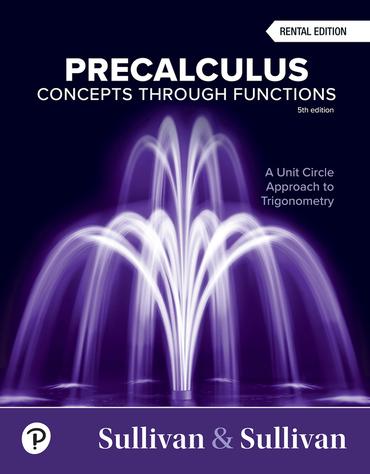Open the Horizontal Compressions and Stretches interactive figure, which is available in the Video & Resource Library
Question:
Open the “Horizontal Compressions and Stretches” interactive figure, which is available in the Video & Resource Library of MyLab Math (under Interactive Figures) or at bit.ly/3raFUGB.
(a) Use the drop-down menu to select the square root (√x) function. The basic function f (x) = √x is drawn in a dashed-blue line with four key points labeled. Set the slider labeled a to 1. Now, use the slider labeled a to slowly increase the value of a from 1 to 3. Carefully note the values of the x-coordinates on the graph of g (drawn in green) compared to the x-coordinates on the graph of f . For example, when a = 2, compare the x-coordinates on the two graphs. Also, notice the form of the function g( x) = f (ax). Repeat this for other functions available in the drop-down menu. Based on what you observe, conclude if the argument x of a function y = f (x) is multiplied by a positive number a > 1, then the graph of the new function y = f (ax) is obtained by multiplying each x-coordinate of y = f (x) by _______. The new graph is a________ (horizontal/ vertical)________ (stretch/compression) of the graph of y = f (x).
(b) Use the drop-down menu to select the square root (√x) function. The basic function f (x) = √x is drawn in a dashed-blue line with three key points labeled. Set the slider labeled a to 1. Now, use the slider labeled a to slowly decrease the value of a from 1 to 0.2. Carefully note the values of the x-coordinates on the graph of g (drawn in green) compared to the x-coordinates on the graph of f . For example, when a = 0.5, compare the x-coordinates on the two graphs. Also, notice the form of the function g( x) = f (ax). Repeat this for other functions available in the drop-down menu. Based on what you observe, conclude if the argument x of a function y = f ( x) is multiplied by a positive number 0 < a < 1, then the graph of the new function y = f (ax) is obtained by multiplying each x-coordinate of y = f ( x) by _______. The new graph is a________ (horizontal/vertical)________ (stretch/compression) of the graph of y = f ( x).
(c) If y = f (x) is some function whose graph contains the point (12, 5), the graph of y = f (3x) would contain the point ______. Express your answer as an ordered pair.
(d) If y = f ( x) is some function whose graph contains the point (3, 2), the graph of y = f (1/4x) would contain the point _______. Express your answer as an ordered pair.
Step by Step Answer:

Precalculus Concepts Through Functions A Unit Circle Approach To Trigonometry
ISBN: 9780137945139
5th Edition
Authors: Michael Sullivan




